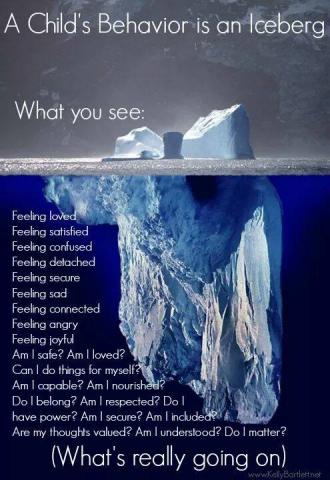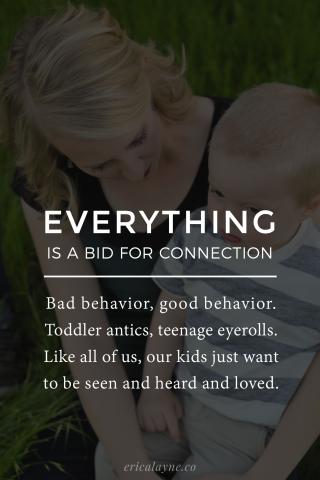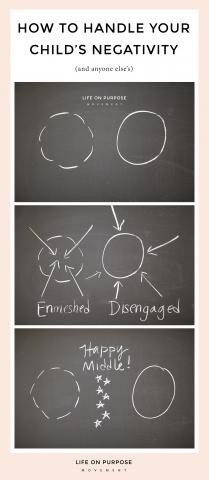


She pulled out her white board. In my experience, breakthroughs come when a therapist pulls out a white board.
Moments before, I’d been unloading all of my feelings on her. I didn’t expect anything to change; I just knew I needed to get the weight of parenting off my chest for a while.
“I love my kids,” I said. “But I can barely handle all of my feelings, much less theirs!”
Our oldest, in particular, had recently started sharing only his negative thoughts with me. He’s nine, so most of them are trivial, but I was struggling to handle his many complaints.
Mom, my ears were hurting when I was swimming… Mom, I don’t think I like my teacher after all… Mom, the yogurt in my school lunch was warm by lunchtime…
The grievances are so small, but when it’s almost all you’re hearing, they add up fast.
Add to that the negativity all of us encounter on a daily basis—a pessimistic co-worker, a Facebook feed filled with polarized political views, even a spouse who just plain had a bad day—and it can weigh us down.
My therapist adjusted the white board on her lap and said it represented a continuum. On one side she drew a circle using a dashed line, and on the other side, she drew a circle using a solid line.
Then she drew arrows pointing toward each circle, but only one of the circles (the one made out of a dashed line) was penetrated by the arrows. The arrows pointing at the other circle (the solid one) couldn’t get through.
“You,” she said, “are the dashed circle. We call that ‘enmeshed.’ Everything gets through. You take it all in.”
She added that we also don’t want to be “disengaged,” the solid circle. That’s too far on the other extreme. Nothing gets in, and it’s an isolating way to live.
So where do we want to be? You called it—the happy middle!
If I had to guess, I’d say most women err on the side of being overly permeable. (We know how our children feel about each of their friends, how our mom friends feel about each other, how our colleagues feel about their jobs, how our spouses like their toast!
And sometimes what we know—all that information that we’re the keepers of—becomes how we feel.
What we’re looking for, though, is a balance between permeable (or enmeshed, as my therapist called it) and impenetrable (or disengaged).
Not everyone’s opinion needs to rest on your shoulders. Not every like or dislike needs to be filed away in your memory. Not every complaint that escapes your child’s lips needs to be fixed by you. It’s okay to just hear them… and let them go.
Two Things to Remember
Next time your child hits you with another negative statement, try remembering these two things:
1. You determine how much you let in.
You know how a hurricane can be raging, but deep within is a small circle of stillness? I try to think of myself as the eye of the storm anytime I’m facing something I don’t want to disturb my inner calm.
I am the eye of the storm. That negativity isn’t getting in right now.
2. Everything is a bid for attention.
When you can keep yourself from becoming enmeshed—from letting those negative feelings inside—you’ll be more able to recognize what’s at play under the surface.
Everything is a bid—a request, a plea—for attention. For connection.
Maybe when your son comes to you with negativity, it’s not a problem for you to solve as much as it is a need for you to simply be there with him. And maybe your daughter can live with the way her door hinges squeak or the way her brother chews at the dinner table, but she can’t thrive without you.
You’re what your child needs. Everything is a bid for attention.
Work to find that happy middle—the place where you can choose what you let in—and see if you can transition with your child from negativity to connection.